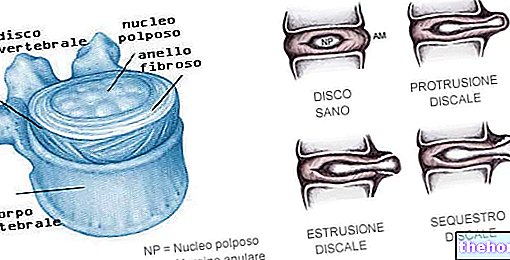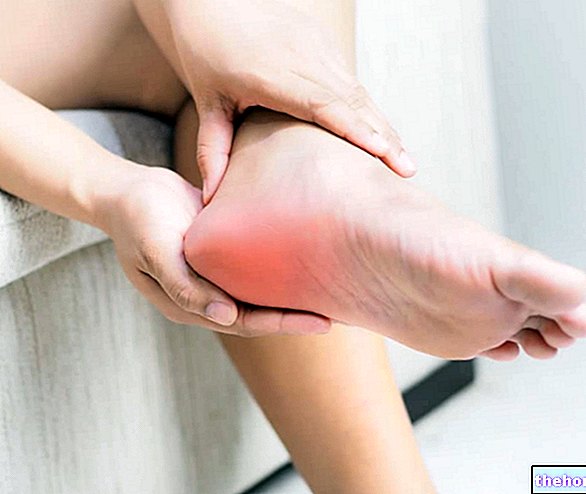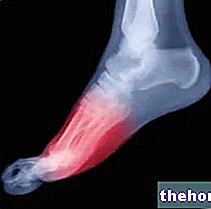
Causes of swollen knee include: traumatic injuries that undermine the integrity of joint structures; some systemic diseases, such as osteoarthritis, rheumatoid arthritis, gout or rheumatic disease; finally, some local conditions, such as for example bursitis, cysts and synoviomas.
Swollen knee is a symptom that almost always occurs in association with other disorders; these disorders vary according to the condition at the origin of the joint swelling.
In order to remedy the swollen knee phenomenon, it is essential to identify the exact causal factor and treat it in the most appropriate way.
Brief anatomical recall of the Knee
The knee is the important synovial joint of the human body, located between the femur (superiorly), tibia (inferiorly) and patella (anteriorly).
Its anatomy is quite complex and includes:
- The articular cartilage, which covers the lower surface of the femur, the inner side of the patella and the center of the upper surface of the tibia, protecting all these bones from mutual friction;

- The synovial membrane, which covers the joint from the inside and produces the synovial fluid, a fluid with a lubricating action for all the internal structures of the knee;
- The collateral ligaments, the cruciate ligaments and the patellar tendon, which, all together, guarantee the stability of the joint and the correct alignment between the femur and the tibia;
- The synovial bags, which are small sacs of synovial membrane, filled with a lubricating fluid very similar to synovial fluid;
- The internal meniscus (or medial meniscus) and the external meniscus (or lateral meniscus), which are pads of cartilage with a cushioning and anti-friction function, located on the sides of the upper surface of the tibia.
Also known as knee swelling, swollen knee is a symptom - thus a manifestation of a medical condition - just like fever, headache, abdominal pain, skin rash, etc.
The term "swollen knee" indicates swelling that affects the knee, when an unusual accumulation of fluid occurs in the latter due to some medical conditions affecting it.
in general;Injuries associated with Swollen Knee
Bruises, violent impacts and unnatural movements (sprains) that have the knee as their victim are traumas capable of damaging / injuring the structures of the affected joint (bones, ligaments, tendons, menisci, etc.).
Knee injuries of traumatic origin most associated with the swollen knee phenomenon include:
- The rupture of a meniscus (ruptured meniscus). Clinically, medial meniscus rupture is less severe than lateral meniscus rupture;

- The fracture of the patella;
- The strain or rupture of a ligament. The ligaments most prone to injury are: the anterior cruciate ligament (rupture of the anterior cruciate ligament), the medial collateral ligament and the lateral collateral ligament; of these ligaments, the one whose injury has the most severe consequences is the anterior cruciate ligament;
- The rupture or inflammation from functional overload of a tendon related to the joint. The most important victim of the aforementioned injuries is the patellar tendon; however, the quadriceps muscle tendon and the popliteal muscle tendon may also be involved.
Systemic Diseases associated with Swollen Knee
Premise: a disease is systemic when it involves a large number of organs or tissues, or when it affects the whole organism.
The main systemic diseases responsible for swollen knee are:
- Osteoarthritis (or osteoarthritis). It is the most widespread form of arthritis of all; to mark joint inflammation is the degeneration of the articular cartilage, followed by a rubbing of the bony components that the aforementioned articular cartilage should protect (degenerating, the articular cartilage becomes thinner and this causes the bony surfaces to come into contact abnormally).
When osteoarthritis affects the knee, doctors also speak of knee osteoarthritis or osteoarthritis;

- Rheumatoid arthritis. The second most widespread form of arthritis after arthrosis, it is a progressive inflammatory disease, which first attacks the synovial membrane of the joints and then the other joint structures (therefore ligaments, cartilage, etc.).
Since it is due to a malfunction of the immune system, rheumatoid arthritis is also considered an autoimmune disease; - Gout. It is a form of arthritis, characterized by the deposition at the joint level of monosodium urate crystals);
- The pseudogout. It is a form of arthritis, characterized by the deposition of calcium pyrophosphate dihydrate crystals);
- Rheumatic disease (or rheumatic fever or acute joint rheumatism). It is an acute inflammatory condition, the result of a "group A beta-hemolytic streptococcal infection, which, in addition to the joints such as the knee, can attack the heart, the central nervous system and the skin;
- Diseases characterized by an "alteration of blood coagulation. The most representative example of a coagulation disease associated with swollen knee is" haemophilia;
- Tuberculosis and syphilis. Both are infections of bacterial origin, with the former being part of lung diseases and the latter being part of sexually transmitted diseases.
Local pathologies causing Swollen Knee
In the "list of potential local diseases capable of causing swollen knee, there are:
- Bursitis of the knee. In medicine, the term "bursitis" indicates the "inflammation of one of the characteristic synovial bags present in important joints such as the knee, shoulder, etc .;
- Knee cysts. The most classic of the knee cysts is the so-called Baker's cyst;

- Knee infections. Knee infections represent a possible complication of joint surgery;
- Tumors that originate from some structures of the joint. A tumor of this kind is the synovioma, which originates from the synovial membrane.
Swollen Knee Risk Factors
The individuals most predisposed to developing a symptom such as a swollen knee are:
- People starting to old age, as these are the preferred targets of arthritis and rheumatoid arthritis (the most common and second most common form of arthritis in the world, respectively);
- Those who play sports, such as football, rugby, skiing or basketball, as they are motor activities in it is easy to get a knee injury or because of a sprain or because of a strong bruise;
- People who are overweight or affected by obesity, as these conditions involve a strain on the knees higher than normal and which, in the long run, leads to a degeneration of the articular cartilage and menisci;
The presence of other symptoms, in addition to the swollen knee, and the nature of these symptoms is strictly dependent on the joint pain in progress.
What are osteophytes?
Similar to a rose thorn, a beak or a claw, osteophytes are small bony growths that develop on the articular surfaces of bones subjected to chronic erosive and irritative processes.
The formation of osteophytes is a typical consequence of the more advanced stages of osteoarthritis and rheumatoid arthritis.
How is the liquid that characterizes the Swollen Knee?
Depending on the triggering cause, the fluid that characterizes the swollen knee can be simply serous or serous mixed with blood.
The first case - serous fluid - is an example of hydrarct, while the second case - serous fluid mixed with blood - is an example of hemarthrosis.
When to see a doctor?
In the presence of a swollen knee, a medical consultation is advisable when the classic remedies, such as joint rest, ice packs on the joint and anti-inflammatories, are ineffective against swelling and any associated symptoms.
Complications
Some causes of swollen knee are so serious that they can profoundly compromise joint motility and / or drastically alter the anatomy of the joint. When one or both of these circumstances occur, the patient's quality of life suffers greatly.
; thanks to the knowledge of the symptoms present and the characteristics of the patient, in fact, he is able to decide with which other investigations to continue his research.Specifically, these investigations may include:
- Imaging tests, such as X-rays, MRI and / or ultrasound.
- Knee X-ray: they allow to identify any bone fractures of the patella, femur or tibia, or the results of the degeneration of the articular cartilage.
- Knee ultrasound: allows you to see the exact position of the liquid; it is not able to highlight any damage to the menisci or ligaments.
- MRI of the knee: guarantees a very detailed overview of the articulation; knee MRI reveals damage to ligaments, tendons and menisci as well as bone fractures and degeneration of joint cartilage.
- Blood tests. They are useful when there is a suspicion that a condition that can be diagnosed through analysis of blood composition or blood behavior is suspected; some of these conditions are, for example, rheumatoid arthritis, infections, haemophilia etc.
- Diagnostic arthrocentesis. Diagnostic knee arthrocentesis consists in aspirating and analyzing in the laboratory a sample of fluid that characterizes the swollen knee.
The use of diagnostic arthrocentesis is useful when the doctor suspects: a coagulation disease, an infection or a condition such as gout or pseudogout. - Arthroscopy for diagnostic purposes. Knee arthroscopy for diagnostic purposes is a minimally invasive surgery, which allows the operating doctor to observe the joint from the inside, thanks to the insertion of an instrument equipped with a camera (the so-called arthroscope ).
Typically, doctors use diagnostic knee arthroscopy only when previous imaging tests have not provided clear information, leaving doubts about the final diagnosis.
To obtain the maximum benefits from cryotherapy it is essential to apply ice 4-6 times a day for a period of time, as a pack, not less than 15 minutes and not more than 30 minutes;
Medical-Surgical Treatments
The list of medical-surgical treatments against the causes of swollen knee includes: arthrocentesis for therapeutic purposes, arthroscopy for therapeutic purposes, knee replacement surgery and synovectomy.
THERAPEUTIC ARTHROCENTHESIS
Therapeutic knee arthrocentesis consists in the aspiration of all the abnormal fluid present inside the joint.
As far as execution is concerned, this practice is identical to knee arthrocentesis for diagnostic purposes.
THERAPEUTIC ARTHROSCOPY

Based on the same principles as diagnostic knee arthroscopy, therapeutic knee arthroscopy consists of a minimally invasive surgery aimed at repairing joint damage.
Therapeutic arthroscopy is essential when the swollen knee is due to joint damage or injury that cannot heal spontaneously with rest (eg anterior cruciate ligament rupture).
KNEE PROSTHESES

Knee replacement surgery is an extremely invasive surgery, which involves replacing the original joint with an artificial joint having the same function.
The use of knee prosthesis is indicated in the presence of severe degeneration of the articular cartilage (eg: severe gonarthrosis).
Did you know that ...
Current knee prostheses can contain metal parts and plastic parts.
There are also total knee prostheses and partial knee prostheses: the former are suitable where it is necessary to replace the entire joint; the latter, on the other hand, are indicated when the joint still has an undamaged part.
SYNOVIECTOMY
Knee synovectomy is the surgery to remove the synovial membrane of the joint in question.
The operation of synovectomy is used in the treatment of synoviomas, ie tumors that originate from the synovial membrane of the joints.




























